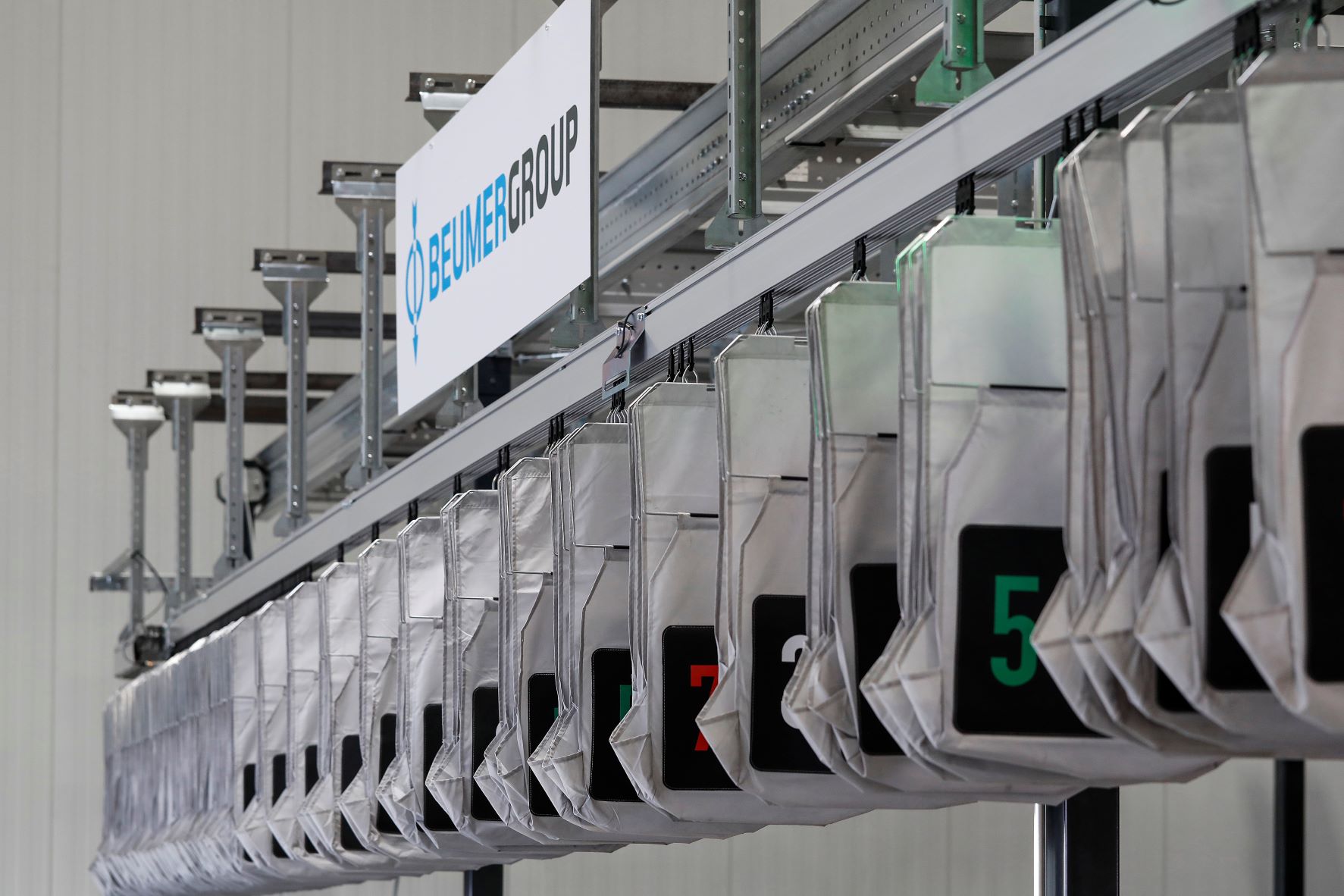Intralogistics customers partnering with Beumer, a provider of warehouse automation technology, can expect step-change improvement in processes. The wins include space, time and cost efficiencies, with better tracking and security as a bonus. Paul Hamblin meets the team.
For Beumer Group, successful business relationships are about partnership. The company bills itself as the ‘Partner of Choice’, validated by the continuing success of the company’s proven technologies, and delivery on the promises made to its partners.
Gregor Baumeister, Director, Warehousing and Distribution Logistics Systems, tells me he was very happy with the company’s LogiMAT this year, describing “concrete project discussions with budgets and timelines” as part of an overall positive sentiment throughout the halls. This perhaps contrasts with ProMat a week later, where his American colleagues described a more cautious and uncertain atmosphere, no doubt due in no small part to the blizzard of tariff announcements and amendments from the Trump administration in the first part of 2025.
End-to-end Automation Provision
At LogiMAT 2024, Beumer focused on ‘Lights Out’ warehouse technology; this year the company highlighted its capabilities in the delivery of end-to-end automation in DCs.
For Gregor Baumeister (pictured below), the argument that automation represents a damaging replacement of human labour is bogus. “The world talks a lot about automation reducing labour opportunities, but I think it’s more accurate to say that our customers are unable to source that labour any longer simply because it is no longer available. So, in reality, the drive towards higher levels of automation is more accurately an enabler to stay in business. That’s the key difference. And with our systems you can create a fully automatic line of warehouse processes.”

He outlines the Beumer product offering. “If you look at the processes in a DC, typically you’ve got goods receiving, then storage facilities, and retrieval via a shuttle or cube system basically bringing products to people,” he explains. “Beumer starts at the point of bringing those goods to people, then we go downstream from there, either in a pouch system or via a loop or line sortation system, including packaging and shipping to customers.”
The company demonstrated full automation of this process in Stuttgart. A significant advance is the automatic unloadable pouch, with which Beumer provides customers – should they choose to do so – with the facility to remove another layer of human interaction on a product’s journey to the end consumer. “Customer partners have the option of feeding a pouch system either via an operator placed at an ergonomic workstation or by using a robot. We will collaborate with customers to provide them with the most appropriate choice for their needs,” he reports. “The pouch system does its magic and the product can then be directly packaged by machine. If it needs special packaging – stretch-wrapping for high-value goods perhaps – this too is possible. All preferences are at the behest of the customer partner.”
Typically, pouch technology is tailored to smaller items in the 550mm x 420mm x 280mm dimensional category. “You can handle these items very effectively in a pouch,” he continues. “Our system handles items up to 7kg each, which is 40% more than other systems can do, and is particularly popular in fashion and general e-commerce settings. In those categories, 70-80% of parcels or bags are that size. Pouch technology is also developing a growing reputation in what we call ‘e-pharma’ handling.”
He points out further space-exploitation benefits of pouch technology. “By hanging the pouch system from the roof, we can use the third dimension in the warehouse. It is super space-efficient, with very high dynamic pick rates and order fulfilment rates. It’s very efficient overall in terms of space, labour, time, and also in tracking and traceability, because every pouch has a ‘licence plate’, making the whole process fully transparent.”
Stretch Hood Security Technology
Another eye-catching security innovation from the company this year is the Beumer stretch hood, which helps to secure pallets. Gregor Baumeister illustrates: “Consider a pallet delivery to shops and stores containing small, high-value goods: a good example might be razor blades. This is what the stretch hood is for – an enclosed hood made of film which can be pulled down and over the goods snugly. Anyone looking to pilfer goods from the pallet would need to tamper with the film to extract anything and this would be very evident in the breakage of the film. While it’s possible to reach inside an unprotected rack pallet to take out a product, it can’t be done with a stretch hood attached. A rack pallet you can always reach in, but with a stretch hood you cannot. In addition, it also provides protection from the elements.”
Learning from Data
Beumer’s advanced data analytics capabilities enable customers to further exploit the full capability of automation technology.
 “Data analytics enables the recognition of patterns, thus facilitating predictive maintenance,” he explains. “But it also performs valuable service in steering operational processes, so that we can proactively advise customers of upcoming situations. In modern business, it’s important to see as far and as early as possible. Our customer diagnostic centres help monitor and manage facilities, offering operational advice if the customer wishes us to do so.”
“Data analytics enables the recognition of patterns, thus facilitating predictive maintenance,” he explains. “But it also performs valuable service in steering operational processes, so that we can proactively advise customers of upcoming situations. In modern business, it’s important to see as far and as early as possible. Our customer diagnostic centres help monitor and manage facilities, offering operational advice if the customer wishes us to do so.”
Beumer’s tools enable the flexibility so essential to today’s logistics needs. “You don’t know what’s coming round the corner,” Baumeister cautions. “You need to avoid roadblocks if you want to stay in business.”
similar news










